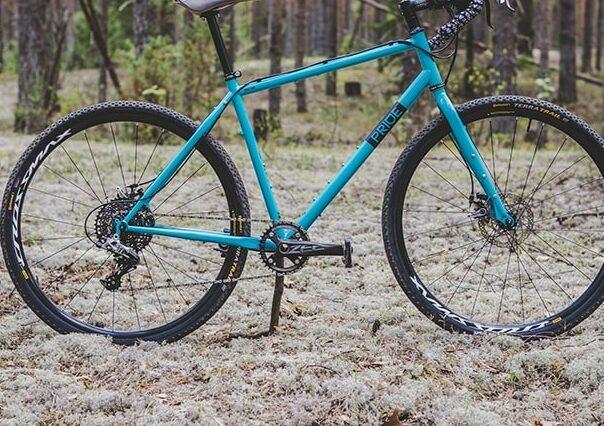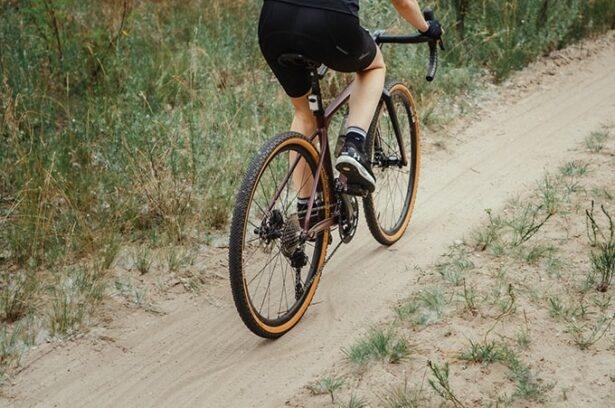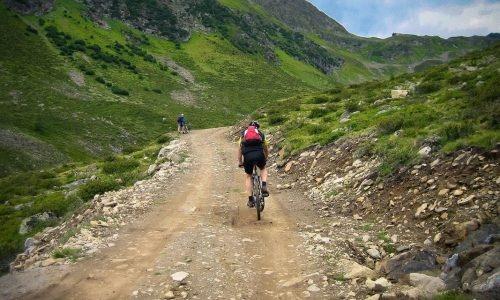In recent years cycling has really changed. We are seeing so much more technology than ever before. It’s exciting to see the progression on those visits to your local bike shop to see what’s new. One thing we are seeing much more of is new drivetrain technology and 1X systems in particular.
We are often asked here at Bike Test Reviews whether you should be using a 1X gearing system or a 2X. This is a very interesting question, and in this article, were going to be telling you everything you need to know by speaking about:
- What Are 1X And 2X Drivetrains
- Understanding The Ratios
- 1X Or 2X, What’s For You?
What Are 1X And 2X Drivetrains?
The best place to start is by telling you about 1X and 2X drivetrains. This will help you understand which is for you:

1X
A 1X drivetrain has recently gained popularity on road and gravel bikes but originally came across from mountain biking. The 1X refers to having one single chainring at the front of the bike where your chainset sits. It’s often referred to as a wide narrow as the notches on the chain go wide, narrow, wide, narrow to match the chain’s wide, narrow links.
It means you don’t require a front derailleur, and this means it can reduce bike weight, and there’s one thing less to go wrong. It’s an incredibly efficient way to go, but it does mean you have to have a large cassette on the rear to compensate for not having two chainrings at the front.
Shifting is very easy because you only have to worry about one single shifter, and you can do light work of getting up and down the cassette without the risk of cross-chaining. On a 1X while in your lowest and highest gear, you get some stretch across, but little compared to a 2x system being cross chained.
A 1X system on a modern bike typically comes with anything from 9 to 13 speeds. This means you only have that many gear ratio options to choose from when riding the bike. On a 2X system, you get double the options because you have double the chainrings.
A 1X system you will typically see on a mountain or gravel bike will offer a lot of gears on the lower range. When it comes to speedy descents, it does suffer as you don’t have many high-speed gears. Overall it’s a great way to go on mountain and gravel bikes but not ideal for bikes such as road racing bikes.
Pros
- Easy to move around the cassette quickly
- No risk of cross chaining
- Very cheap to maintain
- Great for low ratios
Cons
- Not many gears for going fast

2X
If you own a road bike or even a hybrid bike, there’s a strong chance you would have come across a 2X drivetrain system. This is where you have two chainrings at the front of the bike, which you can combine with the rear cassette to help you gear ratios for climbing and descending.
With a 2X system, you require a front derailleur and will require a second shifter to adjust it. It does add weight to the bike and can be more difficult to use for beginners. Unfortunately, it has more to go wrong and will require more time to set up and build, but it does come with some big advantages.
Although you have to use two shifters, having 2 chainrings means you have a much wider range of gears for climbing up hills and descending quickly. You do have the risk of cross-chaining more. Cross-chaining is when your chain line isn’t straight across the drivetrain. For example, being in the largest cog on the cassette and largest on the chainrings makes the chain line lean to the left and doesn’t work as smoothly.
Having 2 chainrings does mean that you generally have more options for gearing. You will run a smaller cassette on the rear, but because you have 2 chainrings at the front, you get gears as low as the 1X system but also gears that go much higher so you can descend quicker.
You also get more options for different speeds across the range. On a modern 2X system, you typically have between 8 and 12 speeds on the rear, and with 2 chainrings on the front, it means you can have up to 24 options for gear ratios.
Pros
- Lots of options for gear ratios
- Typically a wider range of gears compared to a 1X system
- You can drop chainrings ready for steep climbs quickly
- You can use the gears to keep the chain line straighter
Cons
- Slightly heavier
- More to go wrong
- It can be harder to use with two shifters
Understanding the Ratios
A common misconception is that using a 1X system gives you half the amount of speeds, meaning you get half the gear range, typically making it harder for climbing and descending. It’s important to understand that just because you have half the options doesn’t mean you have half the gear range.
As you can see in this picture, although you get a lot more gears to choose from in a 2X system, you generally only get more gears for descending compared to a 1X. Typically you see 1X go much lower on climbing ability depending on the bike it is on.

1x Or 2x What’s For You?
It can be challenging when it comes to picking the right gearing for you between a 1X and a 2X. A lot of it comes down to personal preference, and you might enjoy riding with one more than the other.
We personally think for off-road riding, you get a lot of advantages from using a 1X. It’s much easier to get around the cassette, which typically has a very low range of gearing, and with the wide narrow chainring, you can keep the chain on easier on rough ground.
If you do a lot of road riding, then you might want to consider a 2X system. It offers more ranges for gearing, and you get lots more gearing to play with when it comes to descending. Although you do have two shifters to use, they can work to your advantage.
A Final Note
Years ago, when it came to bike gearing, we didn’t have the option we have now. In modern times we have many more choices, and it can be challenging to understand what will be best for you. We hope you enjoyed our article and now understand it much better.
Read next: Finding the Right Gear: How Many Gears Do You Really Need on Your Bike?

Robbie Ferri has spent years working in a bike shop, has worked with industry leading brands on product creation, has been a semi pro athlete, and is a fully qualified strength and conditioning coach. He has broken World Records, bikepacked all over the World and raced ultra distance at a top-level.


